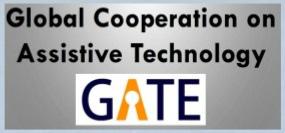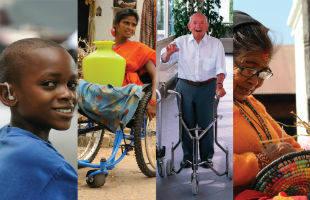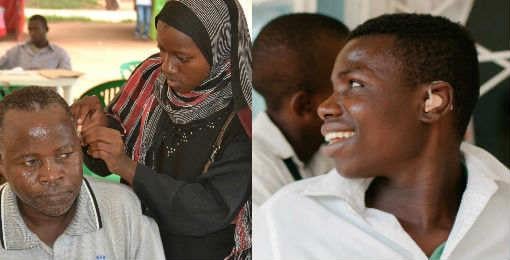
Mac Maclachlan, co-Director of the ALL Institute, is currently Research & Innovation Lead for WHO's Global Collaboration on Assistive Technology (GATE) programme; and Knowledge Management Lead for the United Nations' Partnership for the Rights of Persons with Disabilities (UNPRPD).
What is GATE?
Improving access to assistive technology for everyone, everywhere.
WHO estimates that more than one billion people (mostly older people and people with disabilities) are in need of one or more assistive products. With populations ageing and the rise in noncommunicable diseases, this number is expected to increase to beyond two billion by 2050. Currently, only one in ten people in need have access. To address the substantial gap between the need for and provision of assistive technology, WHO established the Global Cooperation on Assistive Technology (GATE).
Key stakeholders at a side event of the High-level meeting of the General Assembly on disability and development, New York, United States of America, 23 September 2013, requested WHO to develop and coordinate a global initiative to realize the obligations of the Convention on the Rights of Persons with Disabilities towards increasing access to assistive technology (article 32 in particular). In response to this, WHO organized a key stakeholders meeting in Geneva on 3 and 4 July 2014 and established a global initiative: the Global Cooperation on Assistive Technology (GATE). This is in partnership with stakeholders who represent international organizations, donor agencies, professional organizations, academia, and user groups. The vision of the GATE initiative: A world where everyone in need has high-quality, affordable assistive products to lead a healthy, productive and dignified life. The GATE initiative has only one goal: to improve access to high-quality affordable assistive products globally. To achieve this, the GATE initiative will focus on four interlinked activities (4P):
- Policy: assistive technology policy framework (ATP)
- Products: Priority Assistive Products List (APL)
- Personnel: assistive products training package (APT)
- Provision: assistive products service delivery model (APS)

Recalling the Article 32 of the Convention on the Rights of Persons with Disabilities related to International Cooperation on Assistive Technology Noting the urgent need to implement the WHO global disability action plan 2014–2021: Better health for all people with disability Affirming our commitment to support the Member States to improve access to affordable assistive technology
WHO is developing a flagship programme – Global Cooperation on Assistive Technology (GATE) – in partnership with UN Agencies, international organizations, donor agencies, professional organizations, academia, and organizations of/for persons with disabilities.
GATE will open the doors for children with disabilities to access education and adults to earn a living, overcome poverty, participate in all societal activities, and live with dignity, which are some of the key objectives of the global development goals. Assistive Technology, Information and Communication Technology (ICT), Accessible Technology, Universal Design, Accessible or Enabling Environment are all interlinked and are preconditions for mainstreaming disability in development priorities. Investment in technology to make it available and affordable is definitely a practical step to establish the “Promise of Technology to Achieve Sustainable Development for All.”

More Information about GATE
GATE WebsiteGATE Concept Paper
GATE Newsletters
04/02/2020 - GATE Newsletter December 2019 - February 2020
12/20/2019 - GATE Newsletter September-November 2019
09/19/2019 - GATE newsletter June - August 2019
05/31/2019 - GATE newsletter February - May 2019
02/08/2019 - GATE newsletter November 2018 - January 2019
10/11/2018 - GATE newsletter July - October 2018
06/26/2018 - GATE newsletter March - June 2018
01/22/2018 - GATE newsletter January 2018
07/21/2017 - GATE quarterly update March - May 2017
03/07/2017 - GATE Winter Update
12/05/2016 - GATE Autumn Update
